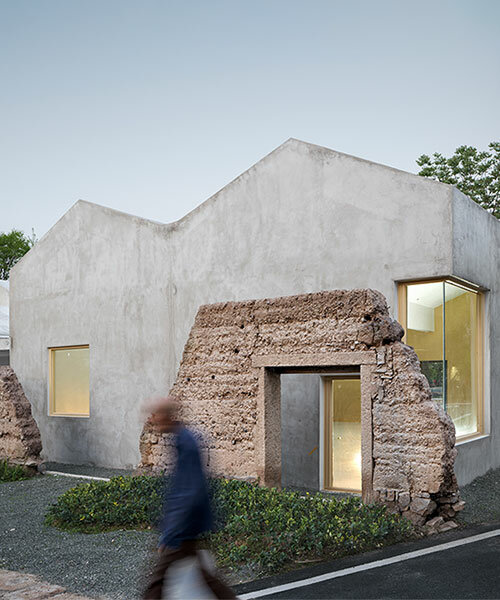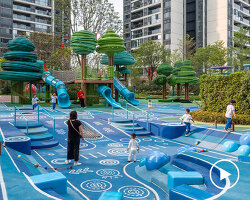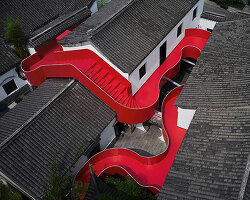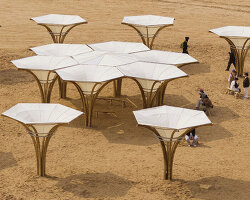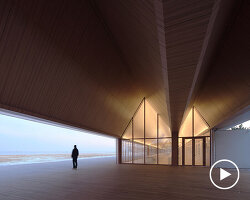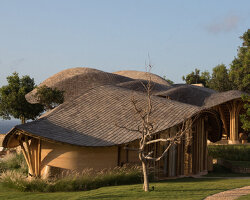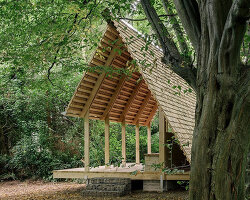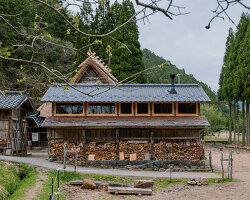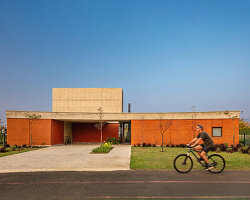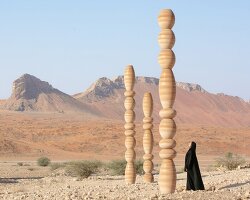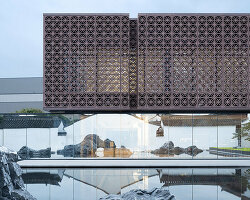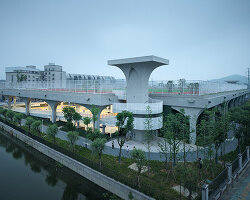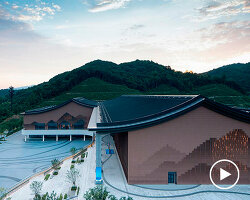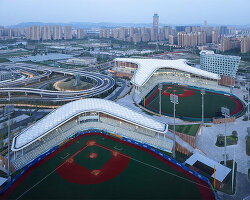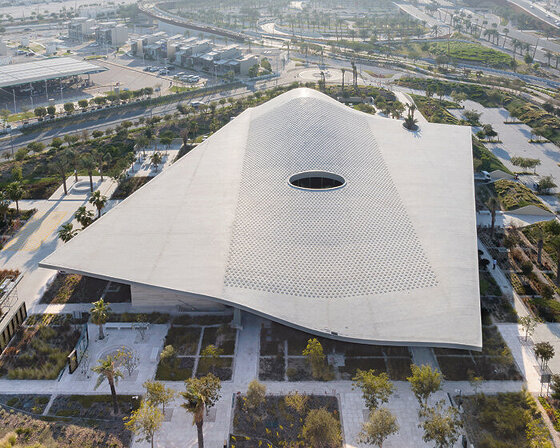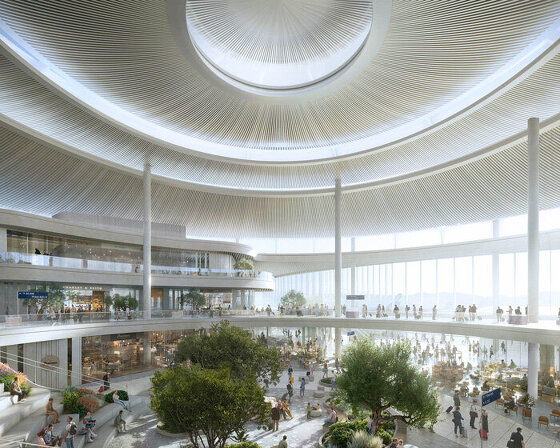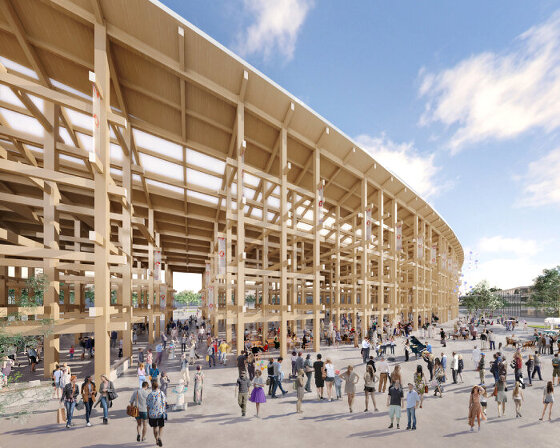UAD’s The Villagers’ Home: A Blend of Tradition and Modernity
The Architectural Design & Research Institute of Zhejiang University (UAD) has created The Villagers’ Home, a series of public spaces in Wanghu Village, Zhejiang Province, China. The project focuses on preserving the architectural features of the region by incorporating elements of traditional structures into the design. Old mud houses and remnants of rammed earth walls were integrated with new concrete structures and modern technology, with the resulting building ‘growing’ naturally from the village’s historical context. The space serves various purposes, including village meetings, receptions, sports and fitness activities, and leisure events like movie screenings.
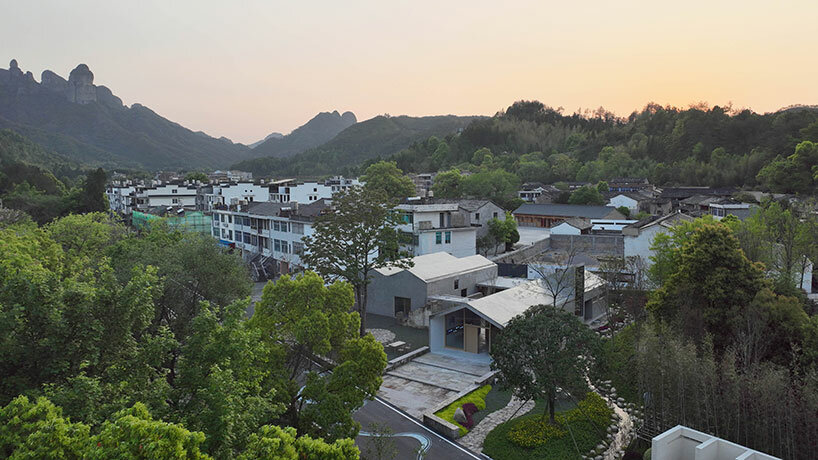
the texture of the village | image © UAD
A Tribute to Wanghu Village’s Architectural legacy
Wanghu Village, located in a mountainous area with fertile soil, is known for its rich agricultural products. Historically, villagers cultivated mushrooms in mud houses with rammed earth walls. However, with modern advancements and declining rural productivity, these old practices have faded from memory. Today, the remnants of these mud houses, including crumbling rammed earth walls, stand as historical witnesses, bearing traces of former windows and doorways that hint at their past usage.
The Villagers’ Home by UAD (find more here) revives these memories by integrating traditional architectural elements into new public spaces. Next to the ruins of two mud houses, additional sections of rammed earth walls were discovered. Local villagers revealed that there were originally three mushroom breeding houses, almost entirely demolished over time. The new design incorporates these remnants, allowing the new building to ‘grow’ naturally out of the old walls. This creates a harmonious blend of new concrete structures and historical fragments, preserving the village’s architectural typology and maintaining its traditional spatial environment. By using modern concrete walls alongside the old rammed earth structures, the design harmonizes with the surrounding environment and bridges the past and present. The sloping roof design continues the local architectural scale and creates familiar spaces for the villagers, ensuring that the new structures resonate with the village’s historical and cultural context.
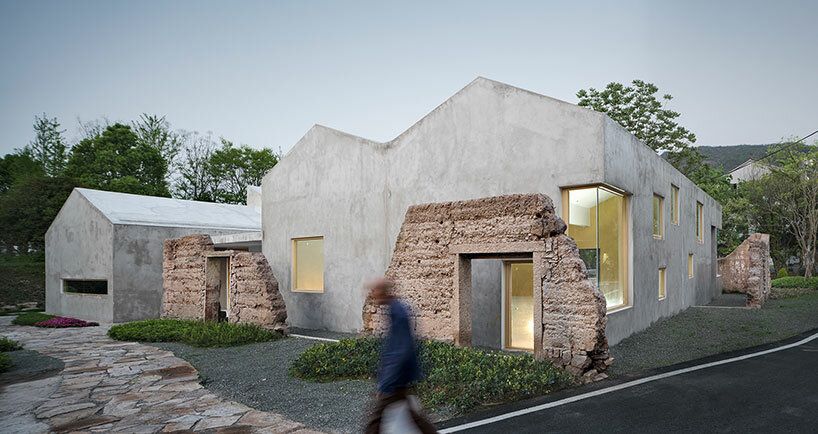
coexistence of old and new | image © Zhao Qiang
bridging past and present
Wanghu Village currently lacks public spaces that can preserve collective culture and meet the material and cultural needs of its residents. Given the limited land available, the activity center is designed to occupy a small area while offering diverse, flexible functions. This multifunctional approach maximizes the building’s usage time: during the day, it serves commercial purposes or provides reading spaces for children, and in the evening, it hosts movie screenings for the villagers. The exhibition hall doubles as a space for visual and textual displays, showcasing the village’s history and mushroom processing techniques. By prioritizing full-time utilization, the design ensures adaptability and sustainability.
This functional approach transforms the space from a productive area to a social public venue, redefining the relationship between architecture and the community. The existing windows on the rammed earth walls are small and evenly spaced, limiting larger openings and affecting light requirements, especially for the mushroom breeding houses. To address this, the Villagers’ Home incorporates various window forms, contrasting solid and void elements to highlight different interior functions. The exhibition hall features large corner windows to enhance natural light, while the café’s entrance is equipped with expansive glass windows to maintain a natural ambiance. High windows on the sloping roof facing the hillside introduce natural scenery and improve spatial comfort, redefining the building’s relationship with nature and enhancing visual connections with the village’s alleys, folk houses, and distant mountains. These design elements create a seamless interaction between the interior and exterior environments.
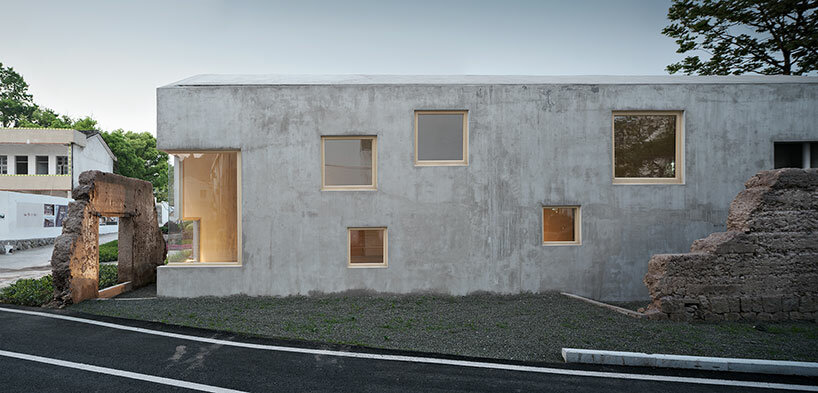
facade reconstruction | image © Zhao Qiang
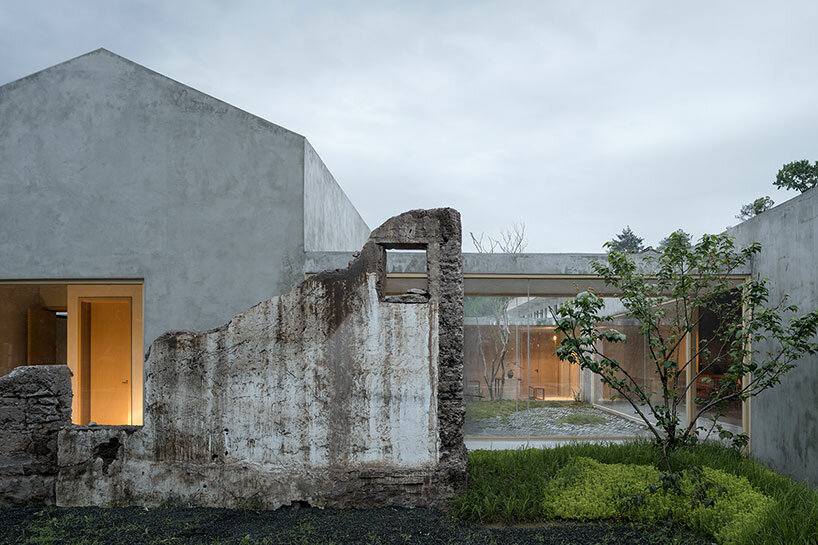
contrast between solid and void elements | image © Zhao Qiang
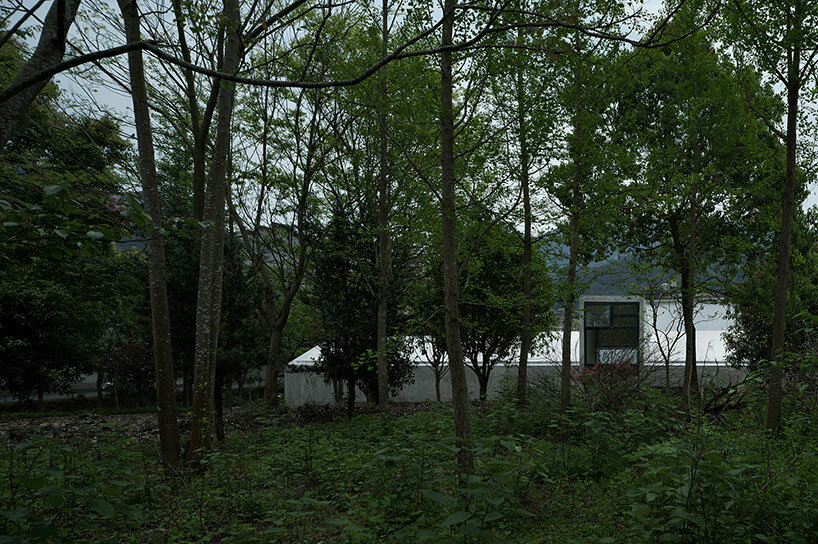
high windows on sloping roof | image © Zhao Qiang
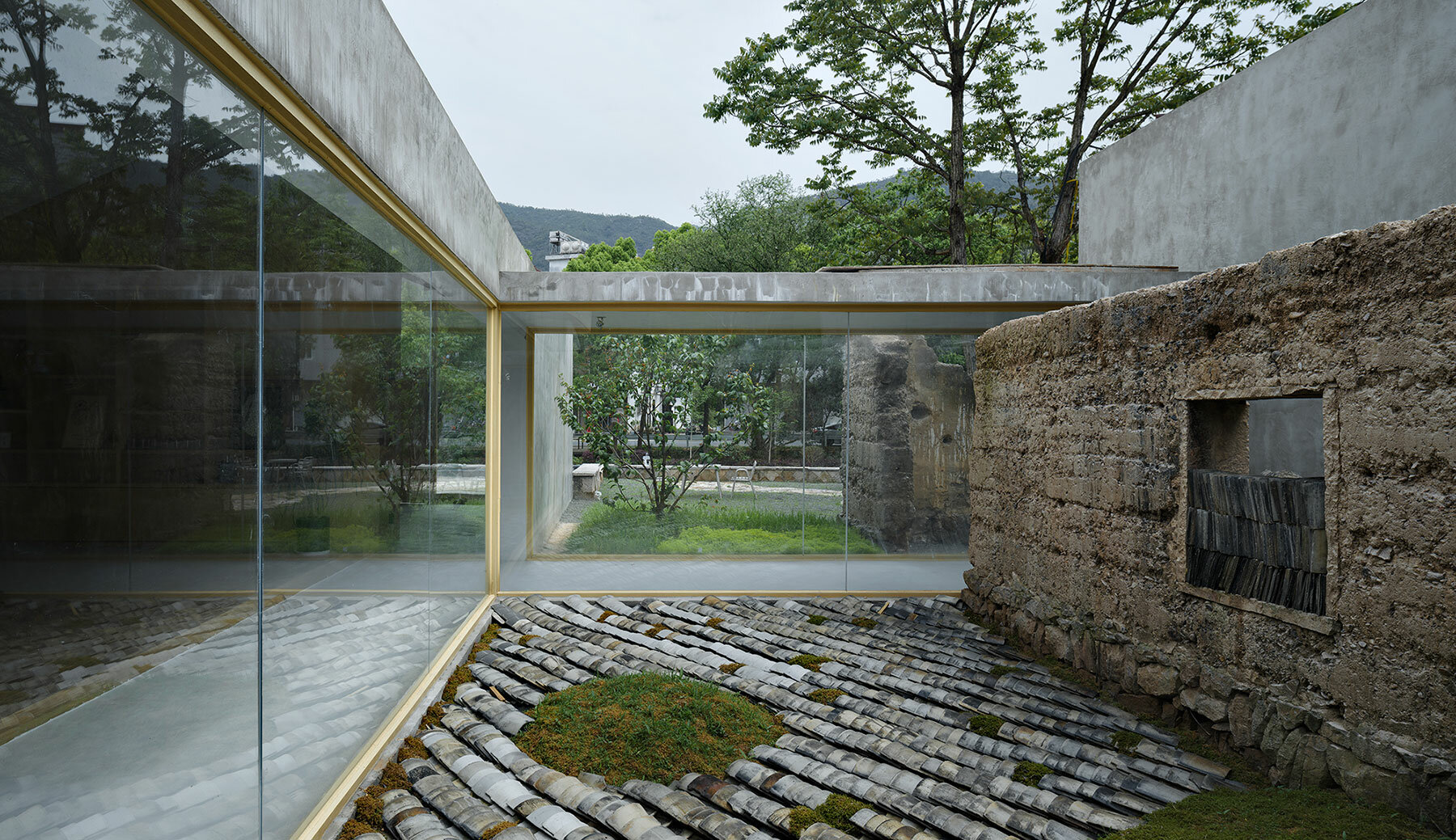
interior courtyard | image © Zhao Qiang
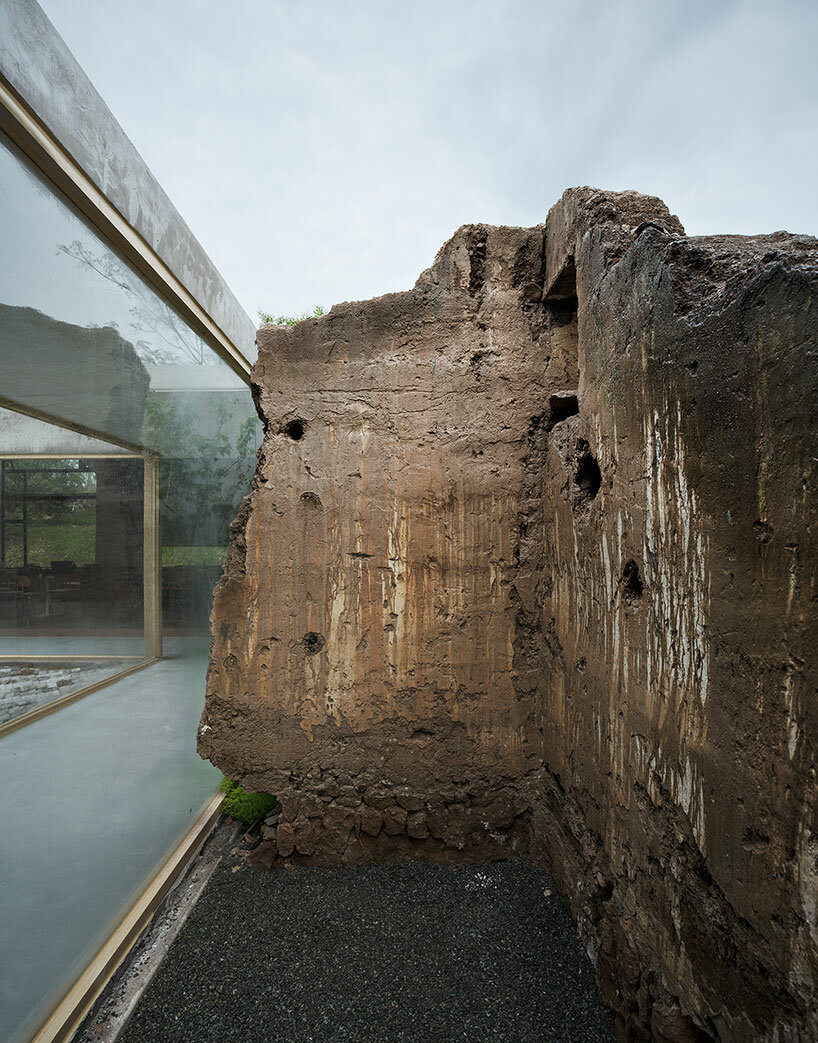
transition between the past and the present | image © Zhao Qiang
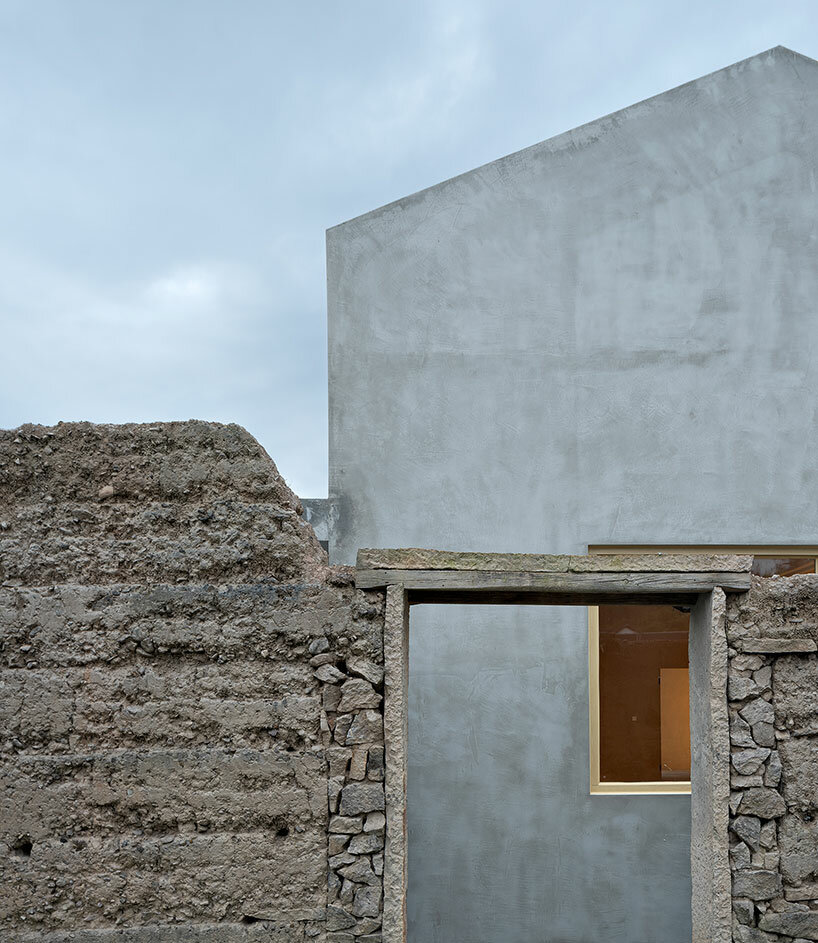
transition between the past and the present | image © Zhao Qiang
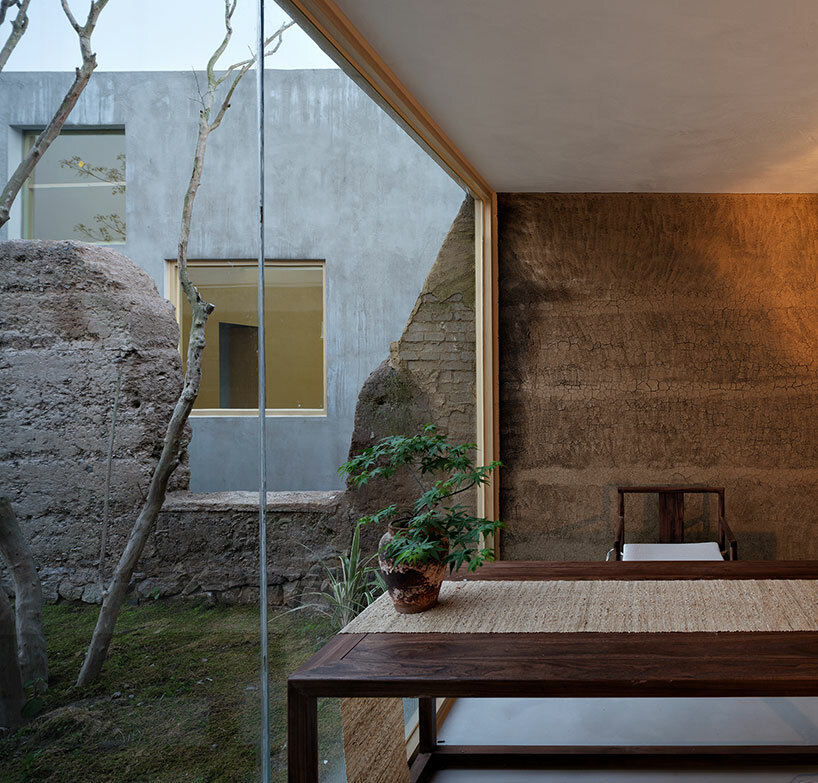
indoor and outdoor spaces | image © Zhao Qiang
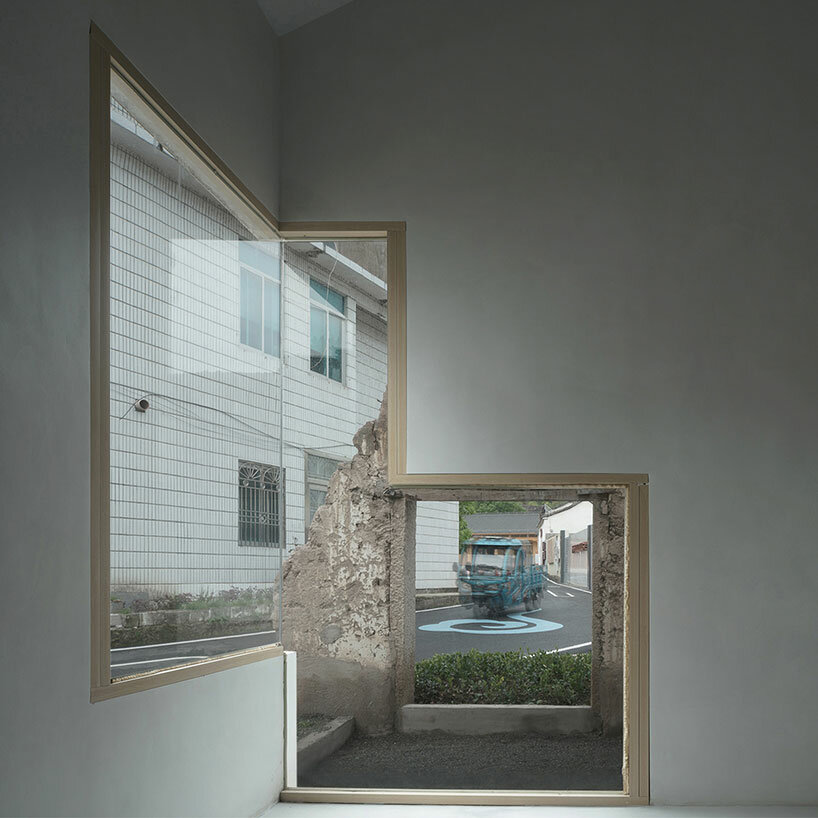
corner windows | image © Zhao Qiang

continuing the local architectural ‘modulor’ | image © Zhao Qiang
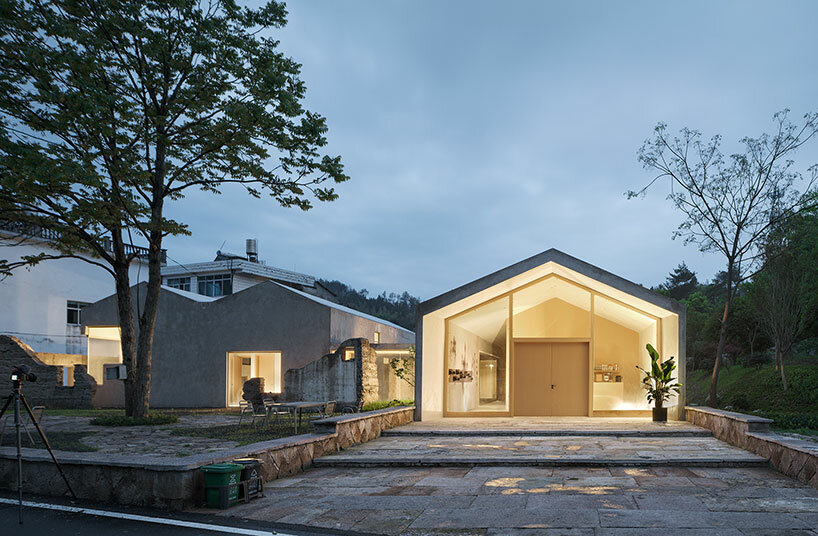
night scene of the Villagers’ Home in Wanghu Village | image © Zhao Qiang
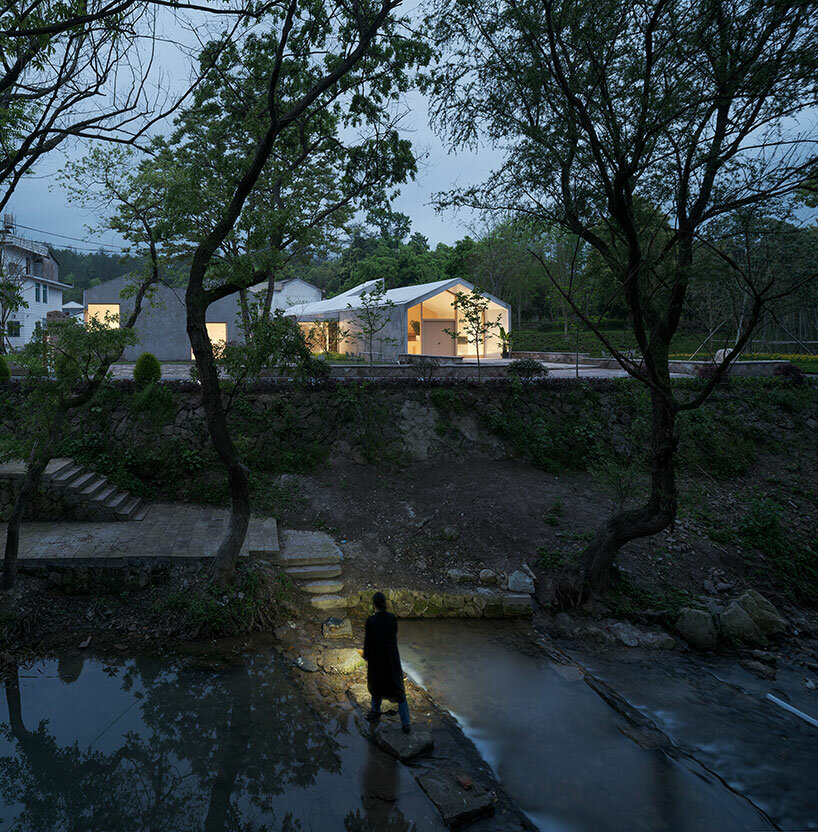
perspective along the river | image © Zhao Qiang
project info:
name: Villagers’ Home in Wanghu Village
architects: The Architectural Design & Research Institute of Zhejiang University(UAD)
architectural design: Mo Zhoujin, Wu Hegen, Guo Lidong
structural design: Jin Zhenfen, Chen Dong
plumbing design: Sang Songbiao, Wu Weihao
electrical design: Shen Yueqing, Li Zhaoyu
intelligent design: Lin Minjun
landscape design: Sun Dongming
location: Wanghu Village, Taizhou, Zhejiang, China
area: 400 sqm
photography: Zhao Qiang
